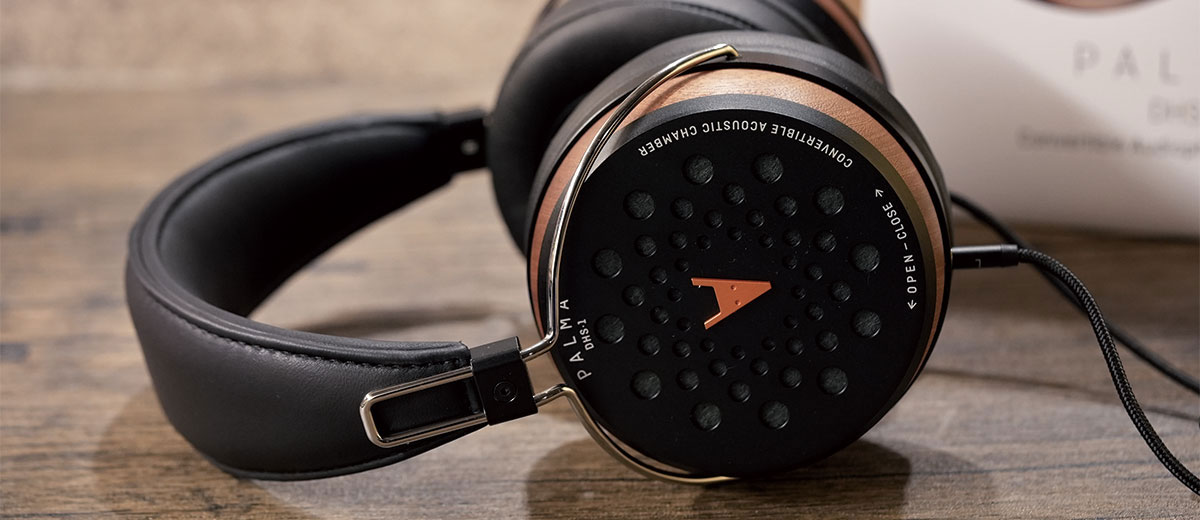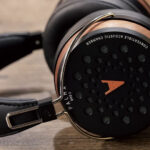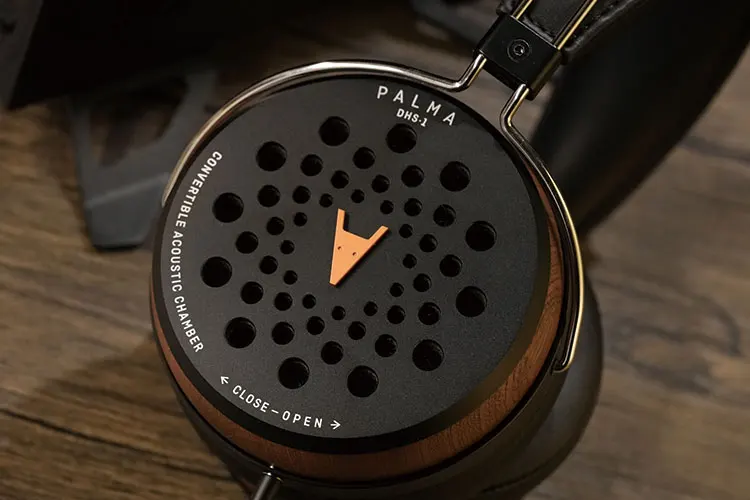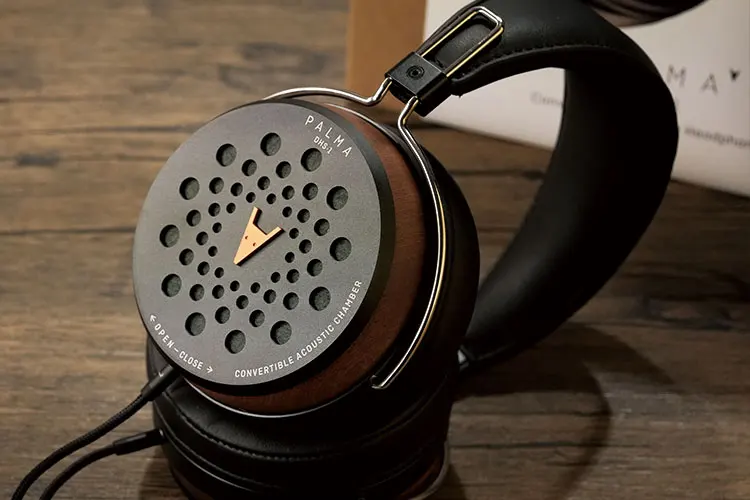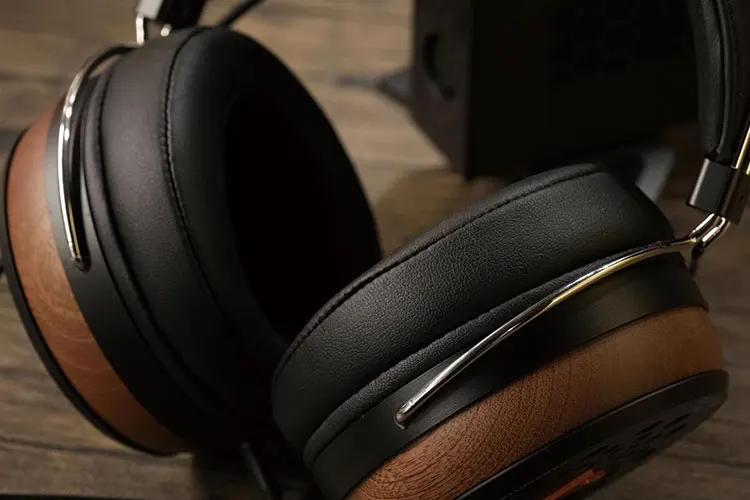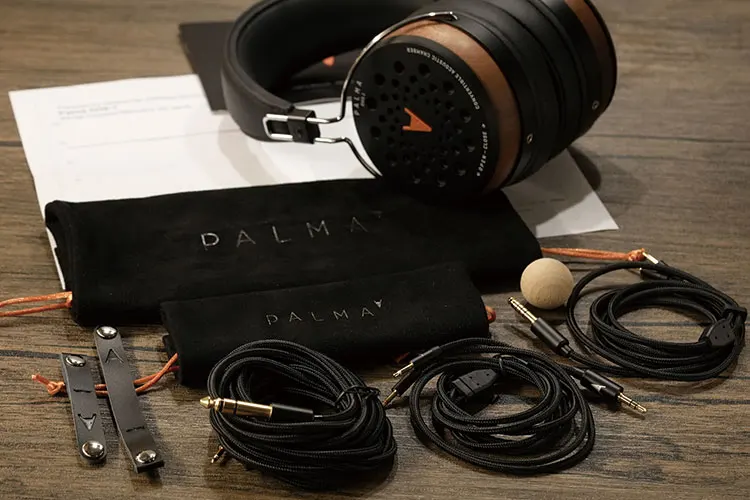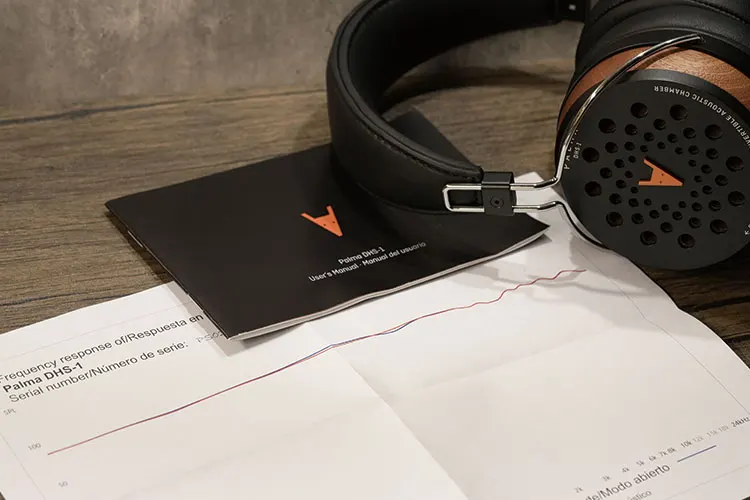In this feature, James reviews the Palma DHS-1, a uniquely designed dual open and closed-back set of 50mm dynamic driver headphones priced at €2195.
Disclaimer: This sample was sent to me in exchange for my honest opinion. Headfonics is an independent website with no affiliate links or status. I thank Palma Audio for their support.
You can click here to learn more about headphones we have previously reviewed on Headfonics.
This article follows our current scoring guidelines which you can read in more detail here.
This week I am reviewing the Palma DHS-1 from Spain. This is a uniquely designed set of headphones that allows the user to switch between open and closed back options or two sound profiles, and a setup that hasn’t been seen since the more modest HIFIMAN Edition S was released in 2016.
Technically, this is even a world-first design for the convertible acoustic chamber – a switching mechanism seamlessly switchable between open-back and closed modes, with no covers or parts to fumble with.
At €2195, the DHS-1 is beautifully constructed and comes in a generous package with plenty of attention to detail.
Is this innovation a mere gimmick and can it truly compete, if not surpass, traditional open-back or closed designs such as the HD 800S or the COSMO? Let’s find out.
Features
The Palma DHS-1 is a pair of 50mm dynamic driver circumaural headphones with a patented switching mechanism for dual sound profiles known as the convertible acoustic chamber and pitches towards high-end audiophiles with its price point.
The mechanism enabling the two sound profiles is centered around a rotating front cover described as a “shutter” on the earcups. This cover, adorned with circular vents aligned in the Golden ratio, can be turned to reveal different holes.
One set of holes features dampers beneath, creating a more closed yet not entirely sealed environment, while the other set allows for free airflow, resulting in an open design. This innovative design enables instant switching between the two modes.
Due to the nature of these changes, the DHS-1 frequency response varies on paper from a listed 2-35000Hz in open-mode to 10-30000Hz in closed-back mode suggesting an enhanced extension in open-mode.
The sensitivity also jumps to 109 dB/1mW from closed mode to 107 dB/1mW in its open mode, which suggests that it is marginally more efficient when the back chamber is closed.
Design
The DHS-1’s beautiful design is a seamless integration of metal and wood, showcasing some intricate design elements.
The golden ratio vents, the vibrant colors on the elevated logo, the innovative turning shutter mechanism, and the meticulously engraved markings coated in white paint create a visually captivating aesthetic.
I find the logo nicely harmonizes with the hues of the Sapele wood nestled between the metallic cover and the plush earpads, and the machining quality is top-notch.
The surface treatment applied to each material utilized in the headphones exemplifies meticulous craftsmanship, simply one of the best builds in the market feeling very premium in practice.
The frame design of the DHS-1 is minimalist, with a luxuriously padded leather headband that feels durable. While the headband adjustment mechanism may feel slightly rigid, it securely maintains its position, though it may take a bit of time to adjust to the storage position for the carrying case.
There are also other small details for example the plugs on the swappable cables are decorated with Palma’s logo. These consistent elements throughout the presentation also underscore the brand’s commitment to precision and detail.
Comfort & Isolation
The DHS-1 comes with very soft leather pads that feel like sheepskin, which gives just the right seal for better bass performance without getting too sticky.
When worn, the leather material feels very premium to the touch and when combined with the broad headband design and soft earpads it feels very comfortable on the head.
At 490g the DHS-1 is moderately weighty and feels very solid in the hand, though it is still quite a bit lighter than some of the heavier headphones like the LCD 2 at 612g.
The headband design helps spread the weight evenly. Interestingly the design doesn’t allow the earcups to be tilted, but the soft earpads do give a good fit and don’t stress the contacting points.
Isolation with the closed-back mode is quite a bit stronger compared to the open-back mode, but you can still feel a little bit of ambiance leaking through for both modes as the closed-back mode uses thick dampers but not completely blocking the vents.
The isolation is sufficient to be used on the streets when switching the shutter to closed-back mode, and the outside will only hear faint leaks from the inside.
Stock Cable
To my surprise, the DHS-1 comes with 3 stock cables terminated to 4.4mm, 3.5mm, and 6.3mm. I appreciate this approach as using convertors will potentially alter or degrade the signal, and affect portability.
On a side note, the 3.5mm and 4.4mm terminated cables are 1.2m long, and the 6.3mm one is 2.8m long which allows you to lay on the chair and have it plugged in on a nearby stack.
The stock cables are very soft and look rather intricate with 2.5mm terminations on the headphones end. The build feels solid with high-quality sheathing materials on the cables.
Packaging & Accessories
Palma has done something very special here. It is the first time I have opened a package that stimulates not only visual and touch senses, but also a pleasant smell from a wooden ball infused with essential oils in the carrying case.
A rich selection of accessories comes with the DHS-1 and everything is customized, from the carrying case to the leather cable binders, and you will also find small pouches to fit extra accessories.
When fitting the DHS-1 back to the case, you can secure it with the elastic band on the case, such that the DHS-1 won’t move at all when transported.
Aside from these, there is also a production certification and a frequency chart of the exact headphones delivered. This is to ensure that every pair made has the same tuning as the original.
Sound Impressions
Roughly 100 hours of burn-in time is dedicated to the DHS-1, considering its wired, dynamic system.
Testing is conducted using the FiiO K19, RME ADI-2 Pro, HIFIMAN EF500, and the Shanling M7. I find the DHS-1 quite responsive to source coloration, as well as fairly revealing on the quality of the file being played back.
Summary
The DHS-1 can be switched to open or closed mode, altering the damping factors in the back chamber.
The alterations are primarily noticed in the finer details and deeper bass through enhanced isolation, and the opened mode sounds cleaner in the lows and tilts more to the treble as you can subtly feel the ambiance.
I suspect that the back of the driver units is well dampened, resulting in subtle changes in response when switching between the two modes. Under both modes, articulation remains swift across the spectrum, with a great sense of airiness especially in the upper mids.
The DHS-1 exhibits considerable sensitivity, particularly when compared to its planar counterparts. Through various pairings, the sound signature feels marginally V-shaped with a moderately fast response.
This helps it to sound clean and revealing on both ends, capturing ample air for instrumentals and possessing authoritative vocals that also bring forth a generous amount of air and brilliance without getting peaky.
I do like the uplifting tuning which works very well with powerful voices but it may be a bit unforgiving for weaker voices and by revealing more flaws in the recording, a characteristic that some manufacturers tend to avoid in favor of playing it safe.
Bass
The low end of the DHS-1 feels effortless and well-extended with adequate bass power. It maintains a fast and controlled impression with speedy attacks and a moderately clean decay possibly due to the wooden chamber.
The bass kicks moderately deep into the subs and gets more elaborative and deeper with warmer, more powerful sources to further boost the dynamics.
Putting it on the FiiO K19, stronger dynamics are achieved with a higher gain mode. It feels like the DHS-1 is quite sensitive and it would require good decoding rather than just strong amplification.
That said, the DHS-1 sounds pretty energetic and balanced even on portable sources, and even with dongles there is adequate definition and speed.
With the closed-back mode, the focus shifts a bit more towards the bass with added perceived weight and punch, also a slightly more elaborative decay as less ambiance is leaking in.
The opened mode feels more extended with stronger depth, partially because of the ambiance blending into the mix, and possibly due to the reduced dampening at the back that allows the driver to move more freely mechanically, yielding better dynamics and speed.
Mids
The bass articulates swiftly to the mids, which is neutrally presented with air well preserved and with coloration possibly from the chamber, to give adequate richness and warmth to the vocal through enriching the harmonics. Despite this, the vocals still sound rather clean and neutral as the mid-bass isn’t fat.
I tested with some Spanish R&B and Latin Jazz with wet guitar licks and powerful vocals, which all sound very enjoyable, with a punch and uplifting bass.
Audiophile mastering and live recordings also perform well in terms of dynamics. However, if you listen to K-pop or tunes that are less powerful on the lower end of the spectrum, you may need to pair the DHS-1 with a warmer source to retain a more forgiving sound signature.
The intensity of the vocal is quite dependent on the coloration from the source and the pitch of the vocalist but generally speaking, they remain smooth in in presentation.
Lighter voices sound more forward and the rather neutral lower midrange tuning keeps the vocals clean and unaltered. Again, the DHS-1 is quite responsive to the quality of the file being played, where good mastering will sound more stereophonic and textured.
When in closed mode, it feels fuller in the low end and vocals, also acoustic instruments are slightly more weighted and expressive in the decay.
Partially it is the isolation that allows the listener to focus more on the reverbs and harmonics, and the closed configuration drags down the response speed of the driver a bit, enhancing the perceived bass intensity.
Treble
The upper register of the DHS-1 exhibits abundant energy, particularly suiting brass instrumental and classical music.
It captures nuances, even at higher sound intensities, while maintaining good dynamics. Its openness and elevation remind me of the HD800, albeit with less prominent and sharp peaks.
There is plenty of air and texture in the upper vocal range that is spot-lighted, delivering good brilliance and robust penetration power that feels quite lifelike but without being excessively analytical.
The treble feels rather speedy and precise with sufficient agility for swift violin bowings, saxophones, rattling drums, and flutes.
Testing with higher pitching instruments the brightness gives me goosebumps. For percussion solos, the cymbals may come across as somewhat intense, and you may try balancing it with a tube amplifier.
Notably, there is a perceptible power emphasis around the 5-8kHz range, enhancing the detail and texture of instrumentals. Sharper vocals, especially in lower-quality recordings, may sound somewhat breathy as there is some sparkle around 10kHz which gives the DHS-1 more revealing power.
In the open mode, the perceived high frequencies extend further, creating a more borderless and airy sound profile, feeling slightly less sharp than when closed. This shift places more focus on the upper frequencies, resulting in a cleaner bass response.
These differences between the open and closed modes are more pronounced when there are more instruments in the tracks, and when the bass intensity is stronger.
Staging & Dynamics
The wide and layered lateral soundstage rendered on the DHS-1 is also another highlight of the design. It sounds very expansive and layered on the x-axis even on weaker sources. It gets more defined, with more depth when paired with better decoding and more powerful sources.
Separation is decent even when powered by portable sources, with the vocal positioned rather intimate but well separated from the backing.
The staging feels even more open on the x-axis when switching to the opened mode. I tried pressing the edge of the earcups that faces the front, tilting the angle a bit, and it feels like there is better depth, though the closer placement also weakens the bass slightly.
It would be interesting to hear the differences with some earpad rolling, possibly tilted and slightly thicker earpads that may contribute to fuller bass and a more holographic presentation.
Click on page 2 below for my recommended pairings and selected comparisons.




